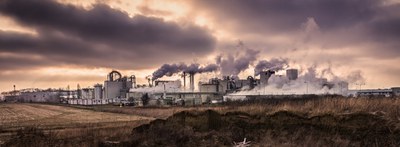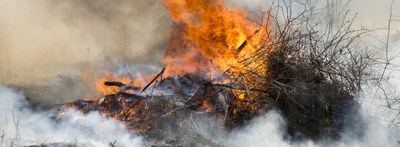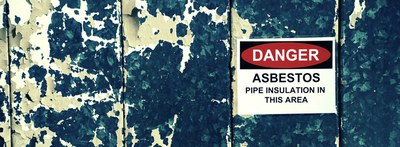Air Quality Permits
Sources of air pollution are regulated under Chapter 20.11 of the New Mexico Administrative Code. Stationary sources operate under different types of air quality permits based on their operations. Open burning, fugitive dust, asbestos removal and demolition are all regulated under different processes outlined in 20.11 NMAC. The Permitting and the Enforcement & Compliance Divisions work together to ensure that all known regulated sources of air pollution in Albuquerque-Bernalillo County operate in accordance with state and federal regulations.
Do I Need an Air Quality Permit?
Business operations, such as dry-cleaning, auto body paint shops, gasoline dispensing facilities, sand and gravel facilities, concrete and asphalt plants, and equipment such as emergency generators, engines, boilers, rock crushers, and conveying systems typically require an air quality permit. Learn more about the types of businesses and equipment that may require an air quality permit.
The Air Quality Program offers services to qualified small businesses to help them become familiar with air quality regulations and navigate the processes for permit applications and permit compliance. Learn more about the Small Business Assistance Program.
Regulated Sources of Air Pollution
Stationary Sources

Stationary Sources of air pollution include buildings, structures, or installations that emit or may emit air pollution. In accordance with 20.11 NMAC, these sources must coordinate with the Air Quality Program and comply with the regulations established to limit air pollution. Learn more about stationary source permitting.
Stationary Source Air Quality Permits in Albuquerque and Bernalillo County
Use the map below to see the locations of current stationary source air quality permits. Different colors represent different permit types, and the size of the circle represents the amount of total permitted emissions. Select a box in the legend to show permits by type, or choose Show All to see all permit types at once. Click on a circle to view the permit information for that source.
Please note, some resource link functionality of the map may be limited from within this page. You can right click links and select 'Open Link in New Tab' or open the map in a larger format here if you experience issues accessing these resources.
The mapping and air quality permit data depicted on this page are presented for informational purposes and are provisional and have not been reviewed for completeness or accuracy. Please see the disclaimer of liability for more information.
Fugitive Dust
 Fugitive Dust is the term used in air quality regulation to describe the tiny particles (particulate matter) that become airborne when ground cover is disturbed by natural causes like wind and erosion or by human activities such as construction, agriculture, and mining. To limit the amount of particulate matter in the air and protect residents’ health, fugitive dust is regulated under 20.11.20 NMAC. All individuals and businesses engaged in activities that may generate fugitive dust that could become a public health issue, nuisance, and/or cross the property line for a specified period of time are required to use dust control measures. Learn more about fugitive dust.
Fugitive Dust is the term used in air quality regulation to describe the tiny particles (particulate matter) that become airborne when ground cover is disturbed by natural causes like wind and erosion or by human activities such as construction, agriculture, and mining. To limit the amount of particulate matter in the air and protect residents’ health, fugitive dust is regulated under 20.11.20 NMAC. All individuals and businesses engaged in activities that may generate fugitive dust that could become a public health issue, nuisance, and/or cross the property line for a specified period of time are required to use dust control measures. Learn more about fugitive dust.
Open Burning
 Open burning is the burning of materials such as trees, brush, leaves, grass and other debris where smoke and other emissions are released directly into the air without passing through a chimney or stack. Air pollution from open burning can cause serious health problems, obscure visibility, or damage the environment. The Air Quality Program regulates open burning to address these concerns. Regulation 20.11.21 NMAC requires a permit for open burning, with the exception of campfires, barbecues, and small fires for warmth. Burn piles larger than 3 square feet need a permit. Learn more about open burn regulations.
Open burning is the burning of materials such as trees, brush, leaves, grass and other debris where smoke and other emissions are released directly into the air without passing through a chimney or stack. Air pollution from open burning can cause serious health problems, obscure visibility, or damage the environment. The Air Quality Program regulates open burning to address these concerns. Regulation 20.11.21 NMAC requires a permit for open burning, with the exception of campfires, barbecues, and small fires for warmth. Burn piles larger than 3 square feet need a permit. Learn more about open burn regulations.
Asbestos
 Asbestos is the name given to a number of naturally occurring fibrous minerals with high tensile strength, the ability to be woven, and resistance to heat and most chemicals. Because of these properties, asbestos fibers have been used in a wide range of manufactured goods. Exposure to asbestos increases your risk of developing lung disease. Asbestos removal is a regulated activity, and the Air Quality Program oversees the removal of Regulated Asbestos Containing Material (RACM) in Bernalillo County. Learn more about asbestos removal.
Asbestos is the name given to a number of naturally occurring fibrous minerals with high tensile strength, the ability to be woven, and resistance to heat and most chemicals. Because of these properties, asbestos fibers have been used in a wide range of manufactured goods. Exposure to asbestos increases your risk of developing lung disease. Asbestos removal is a regulated activity, and the Air Quality Program oversees the removal of Regulated Asbestos Containing Material (RACM) in Bernalillo County. Learn more about asbestos removal.
Request Electronic Notification of Stationary Sources Permit Applications
Pending Stationary Source Air Quality Permit Applications
| Application # | Name | Comment On | Comment Period Ends |
|---|---|---|---|
| 1958-M2 |
Kairos Power, LLC |
Application | Closed for comment |
| 0752-M5 |
American Gypsum Company, LLC |
Draft Documents/Public Information Hearing | Closed for comment |
| 0527-RN2 |
Kirtland Air Force Base (KAFB) |
Title V Draft Permit | Closed for comment |
Public Information Hearing Policy and Request Form
The state air quality code (Regulation 20.11.41 NMAC) states that “if the Environmental Health Department director determines there is significant public interest in the air quality permit application and a significant air quality issue is involved the Department shall hold a public information hearing pursuant to 20.11.41.15 NMAC.”
Public interest is considered significant if:
- five or more individuals request a Public Information Hearing, or
- a request includes a petition signed by five or more individuals, or
- a request is submitted by an elected official, including an elected representative of a Neighborhood Association, who represents the area surrounding the proposed action.
An air quality issue is considered significant if:
- it relates to a Title V stationary source, or
- it relates to a Synthetic Minor stationary source, or
- it is specific to air quality permitting regulations and is based on the permitting action described in the Public Notice.
To request a Public Information Hearing: Complete the Public Information Hearing Request Form and submit it to the Permitting Division via mail or e-mail within 30 days of the Public Notice. Instructions and addresses are included on the form.
Following the 30-day comment period, the Department will review all requests within 10 business days to evaluate if there is significant public interest and a significant air quality issue. Based on the evaluation, the department Director will determine if a Public Information Hearing will be held.
Download the Public Information Hearing Request Form.
Air Quality Notifications (AQNs)
View all Air Quality Notifications issued here.
Applicable Regulations
View air quality regulations applicable to operators in Albuquerque and Bernalillo County.
